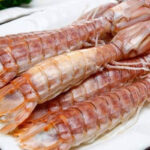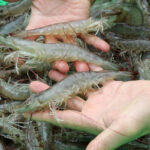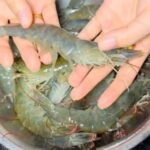How to Prepare Shrimp to Remove Any Fishy Odor
Shrimp is a nutritious food, but improper preparation can result in a fishy odor. The dirtiest parts of a shrimp are the vein along its back and the head. Thus, when you buy shrimp, rinse them thoroughly under running water. Use a toothpick to remove the vein, and squeeze the head to remove any impurities. These are the dirtiest and most fishy-smelling parts of the shrimp. Once you’ve removed the vein and squeezed the head, soak the shrimp in water mixed with white wine.
Wine is the secret to eliminating any fishy odor from shrimp and ensuring they turn a beautiful red color when cooked, making them look more appealing and fresh. White wine or cooking wine is preferable. If you don’t have any wine, you can use beer instead.
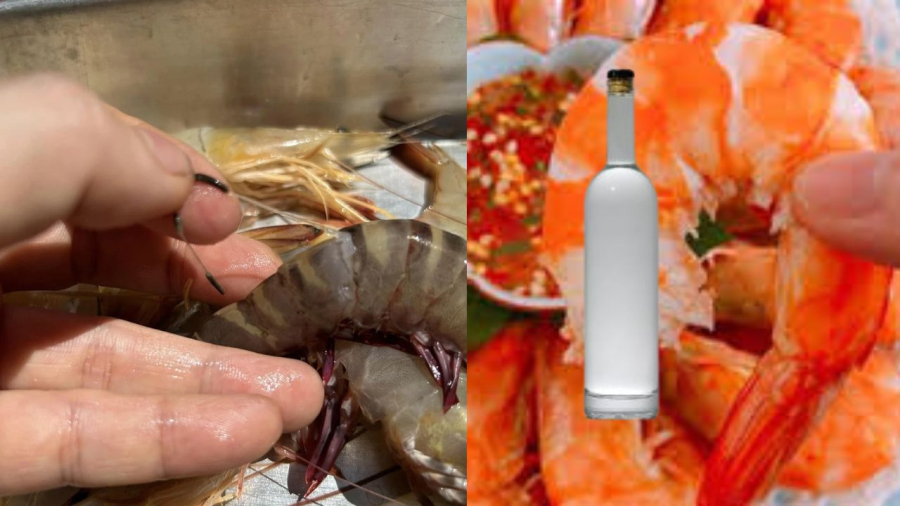
Proper Shrimp Preparation Removes Odor and Wine Enhances Color
Boiling Shrimp
When boiling shrimp, avoid using cold water as they cook quickly. Boiling in cold water will cause the shrimp to release their nutrients into the water. Instead, boil enough water to cover the shrimp, along with lemongrass, ginger, spices, a dash of apple cider vinegar, or a splash of white wine.
While waiting for the water to boil, prepare a bowl of ice water to shock the shrimp afterward.
Once the water reaches a rolling boil, add the shrimp. Add a manageable number of shrimp to ensure the water returns to a boil quickly. If you need to boil a large quantity, do so in batches. Boil for approximately 3-5 minutes, depending on the size of the shrimp. Overcooking will make them tough and chewy, and it will be difficult to peel the shells. You’ll know they’re done when they turn red and a few start floating to the surface. Turn off the heat and let them sit for another minute or two to ensure even cooking, resulting in firmer, sweeter meat.
Immediately transfer the cooked shrimp to the ice water to halt the cooking process. This sudden change in temperature will cause the shrimp to contract, making them easier to peel. Soak them for only 1-2 minutes, depending on the quantity, then drain and arrange them on a plate.
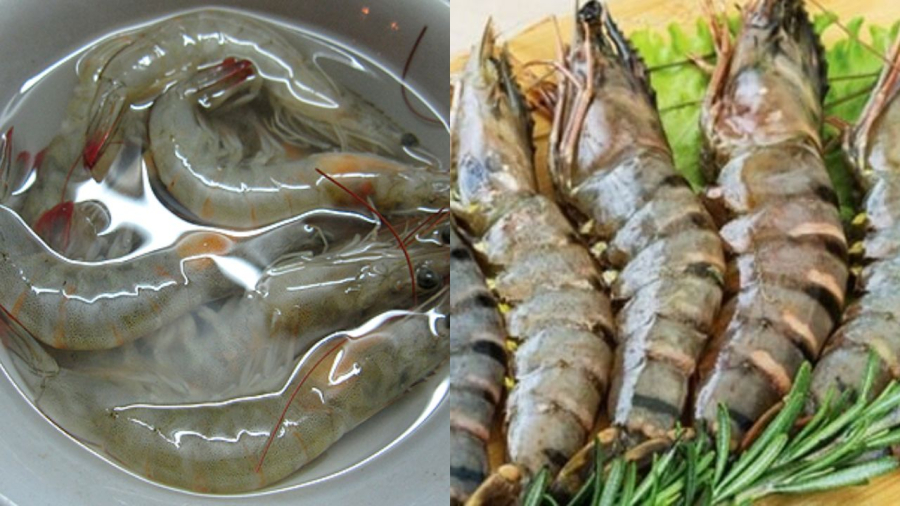
Prepare Ice Water for Shocking and Always Boil Shrimp in Hot Water
Important Notes When Preparing and Boiling Shrimp
White wine not only helps eliminate any fishy odor but also enhances the color of the shrimp. Always boil shrimp in hot water to prevent a fishy odor, and the rapid boiling causes the shrimp to contract, sealing in their sweet flavor. You can also add a few slices of lemon, with the peel on, to the ice water for added aroma.
To make a delicious seafood dipping sauce, blend salt, sugar, MSG, lemon or pomelo juice, condensed milk, kaffir lime leaves, and chili peppers to taste. Adjust the quantities according to your family’s preferences.
When buying shrimp, always opt for fresh ones and avoid those that have lost their heads or have a strange odor. Shrimp that haven’t been injected with chemicals will have firm, yet pliable bodies, and their heads will be slightly curled, not fan-like.
The Secret to Keeping Shrimp Fresh for Up to Six Months: Don’t Refrigerate, Try This Instead
Shrimp is a popular delicacy, enjoyed by many. However, not everyone knows the correct way to store shrimp. With my expert knowledge, I can guide you through the process, ensuring your shrimp stays fresh and tasty. Imagine your dishes enhanced with perfectly preserved shrimp, taking your culinary creations to the next level.



























